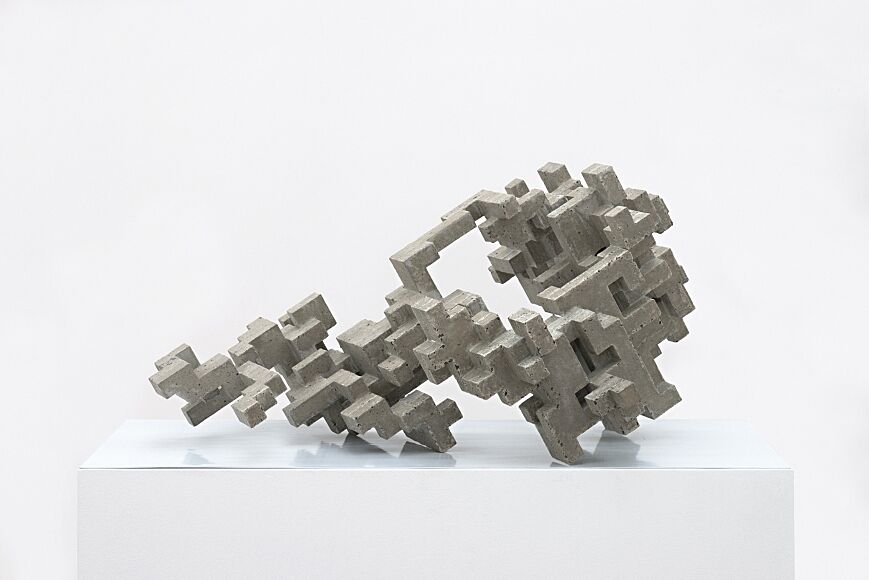Programmed: Rules, Codes, and Choreographies in Art, 1965–2018 | Art & Artists
Sept 28, 2018–Apr 14, 2019
Programmed: Rules, Codes, and Choreographies in Art, 1965–2018 | Art & Artists
Rule, Instruction, Algorithm:
Generative Measures
2
“Generative art” is defined as any art practice in which the artist hands over control to a system that can function autonomously and that contributes to or creates a work of art. These systems range from natural language instructions and mathematical operations to computer programs and biological processes. While artworks with generative qualities appear throughout the exhibition, works by Ian Cheng, Alex Dodge, and Cheyney Thompson underscore their own process of coming into being or emergence. This emphasis allows us to see an artwork as an open process, where algorithms enable variations in form. Whether using code or chat bots—computer programs designed to simulate conversation with human users—each of these works invites us to rethink authorship, materiality, communication, and meaning.
Cheyney Thompson, Broken Volume (10 L), 2013
In his Broken Volume sculptures Cheyney Thompson arranges one-inch concrete cubes along a path prescribed by the Drunken Walk algorithm, a type of Random Walk algorithm used in fields ranging from computer science and biology to economics to describe a succession of random steps that maps possible variations of a phenomenon. The works in this series all share the same volume of concrete, ten liters (10 L). Since the algorithm places no constraint on the sculptural forms and does not acknowledge the material’s structural limits, the forms may break under their own weight. In fact, in the process of installing this work, it broke and is now presented in the exhibition as two parts. The Broken Volume series captures the tension between the immateriality of an algorithm and the physical forms it produces. In doing so, the series comments on the potentially precarious nature of the increasingly algorithmic design of our environment— from architecture to financial markets—in which rules define, encode, and clarify relationships between elements of our daily life.
Artists
- Josef Albers
- Cory Arcangel
- Tauba Auerbach
- Jonah Brucker-Cohen
- Jim Campbell
- Ian Cheng
- Lucinda Childs
- Charles Csuri
- Agnes Denes
- Alex Dodge
- Charles Gaines
- Philip Glass
- Frederick Hammersley
- Channa Horwitz
- Donald Judd
- Joseph Kosuth
- Shigeko Kubota
- Marc Lafia
- Barbara Lattanzi
- Lynn Hershman Leeson
- Sol LeWitt
- Fang-yu Lin
- Manfred Mohr
- Katherine Moriwaki
- Mendi + Keith Obadike
- Nam June Paik
- William Bradford Paley
- Paul Pfeiffer
- Casey Reas
- Earl Reiback
- Rafaël Rozendaal
- Lillian Schwartz
- James L. Seawright
- John F. Simon Jr.
- Steina
- Mika Tajima
- Tamiko Thiel
- Cheyney Thompson
- Joan Truckenbrod
- Siebren Versteeg
- Lawrence Weiner

